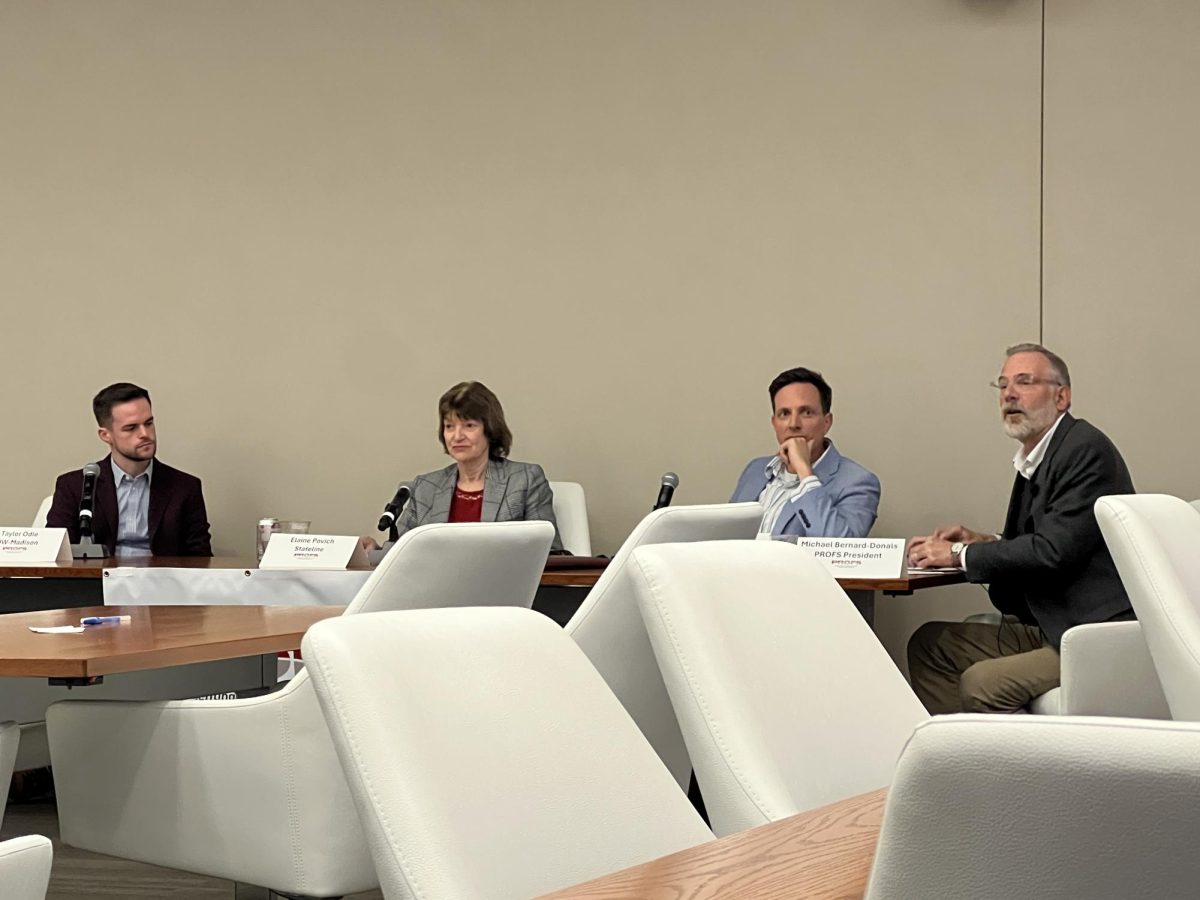This story is the second of a two-part series investigating sexual assault on the University of Wisconsin campus.
Experts say the University of Wisconsin culture must shift to combat the prevalence of sexual assault on campus and in the surroundings areas.
Student organizers and members of the UW staff say the university needs to pull more weight for a difference to be realized.
Controversy within the UW campus
Jacqueline O’Reilly, Promoting Awareness, Victim Empowerment spokesperson, said students at UW facilitate a “rape culture” where it is extremely difficult for victims to come forward and eventually get the services they need.
“We live in a society where people are intolerant of this crime and its victims because they understand sexual assault to be something that happens in the middle of the night when no one is around or when a stranger jumps out of the bushes, but how it happens on a college campus is quite different,” she said. “And a lot of the time, the first thing people will ask is ‘have you been drinking, were you wearing slutty clothing or are you already considered promiscuous?'”
Although UW complies with all federal and state mandates regarding sexual assault documentation and awareness on college campuses, O’Reilly said students are the ones pulling the weight in regard to combating the issue.
“The bulk of the work for sexual assault prevention is being done by students, not the UW, and that’s a problem,” she said. “As it stands, UW is the only school in the Big Ten that does not have an administrative body or office dedicated to sexual assault prevention – it’s alarming and could make someone feel even more isolated in a very difficult situation.”
Still, Bryan Bain, assistant dean for the Division of Student Life, said the university strives to do everything possible to provide a safe environment for students and offer necessary resources.
Every college campus has to perform a balancing act and determine the right ways to get information to students. Universities are always looking for better ways to communicate with students and make sure they are aware of available resources and relevant information, Bain said.
Despite these efforts however, resources fell short this semester because of an oversight in training protocol within the UW Housing that resulted in house fellows on the UW campus not receiving training for responding to sexual assault victims.
Members of the University Health Services community have been working closely with the residence life division to ensure the oversight does not happen again. They have also used the partnership to expand services, said Carmen Hotvedt, UHS violence prevention specialist.
“There are also 1,700 students in university employment who could be a very helpful resource in their job,” Hotvedt said. “We identified the ability to work with them very specifically not just for house fellow training, but also for student employees. They very much came to us and have been awesome partners.”
Campus controversy surrounding the first year education program in sexual assault is also in the process of being rectified, Hotvedt said. The same voluntary online program has been used for incoming students for the past three years, but is no longer in operation because of points of ineffectiveness identified in the program.
“There should not be a gap in service for students having access to a program next year,” Hotvedt said. “The bigger issue is whether or not UW will say the program and its importance is part of becoming a Badger.”
A new program developed by members of the violence prevention ward and other stakeholders in the campus community is scheduled to debut next year, she said.
Campus and community resources
Despite UW’s possible shortcomings, Shira Phelps, UHS violence against women prevention coordinator, said the campus is fortunate to have dependable support from the UW Police Department.
“We’re really lucky on this campus to have an incredible police department that for the most part is really eager to learn more and eager to be trained,” Phelps said. “An important piece of what we do is train professional staff on what to do if someone discloses … making sure law enforcement is connected with community services.”
While students have the option of reporting a sexual assault to UWPD or the Madison Police Department, Phelps said each student needs to choose their own path in reporting and do what they feel is necessary.
Bain said students could bring the allegations in front of the Student Conduct System where UW officials would host interviews and investigations and work with students to direct them to available resources.
The Student Conduct System is independent of the legal system, and a student can opt to pursue either route, both or neither, Bain said. Through a UW investigation, a student found in violation of school conduct could face suspension or expulsion, depending on the circumstances.
“UW’s standpoint is that we treat these cases very seriously and we understand the severity and nature of these types of cases. So, we would look at them very seriously,” Bains said. “Our first priority is to listen to the student and make sure there is support and safety for the student in place.”
MPD spokesperson Joel DeSpain said the majority of cases brought forth by students involve acquaintances. This can make the actual investigation easier but can present problems in finding out exactly what happened.
When MPD classifies those involved as acquaintances, it could mean the individuals involved met for the first time the night of an alleged attack, DeSpain said.
Despite where a student chooses to bring their complaint, UW offers counseling through UHS, houses an office for the Rape Crisis Center in the Student Activity Center and allows students an opportunity to look at all available resources, Phelps said.
“A big thing people expect is that there’s a big place, a right place and a right step for victims to go,” Hotvedt said. “But really there’s a lot of good first steps depending on your needs. Often victims go to [family or friends] where we see a dramatic lack of capacity to do a basic human response because of the myths that sexual violence is the victim’s fault.”
In order to change the common response to sexual assault victims, Phelps said the university could potentially use more staff dedicated only to sexual assault and domestic violence issues.
Phelps and Hotvedt said they offer training and expertise in sexual assault prevention and awareness, but said they are “buried” in the institution, creating further barriers for victims.
UHS has a number of departments, one of which is the prevention unit. Within the prevention unit, there is a campus community partnership, and within that subset is where the women’s violence prevention coordinators sit.
To change a culture
Because prosecution rates for sexual assaults account for only 10 percent of the total number crimes reported, Rape Crisis Center Executive Director Kelly Anderson said society – not just UW – needs to change its perception of sexual assault to achieve greater justice.
While some jurors and community members look to shows like “Law and Order: Special Victims Unit” and “Criminal Minds” for stereotypes of what a perpetrator is and looks like, Anderson said these portrayals are drastically inaccurate and negatively impact real-life conviction rates.
“When it comes to acquaintance assaults on college campuses, the assailant is generally a clean-cut college guy, not someone the general public is going to see as a rapist,” Anderson said. “The average person doesn’t get that a perpetrator is often a normal guy and not necessarily the psychopaths shown on TV – most are typical American socialized men who are crossing a line in terms of being entitled to something from another human being.”
The university is in compliance with mandates to educate the community, but Hotvedt said more must be done to combat the current campus culture.
She added the campus is facing a crisis because it is meeting policies and minimum standards, but victimization and sexual assault are still occurring.
Ultimately, Hotvedt said, the university needs to work with students to clarify that it is an expectation that each individual has a right to his or her own body.
She said UW has a climate in which women go out to the bars and expect to be touched in some form without consent. This is an issue that, along with many others, she said needs to be rectified to combat sexual assault occurrence.
“Where are we going to be in 10 years”? Hotvedt said. “Will we sill have 25 percent of women being victimized”?






















